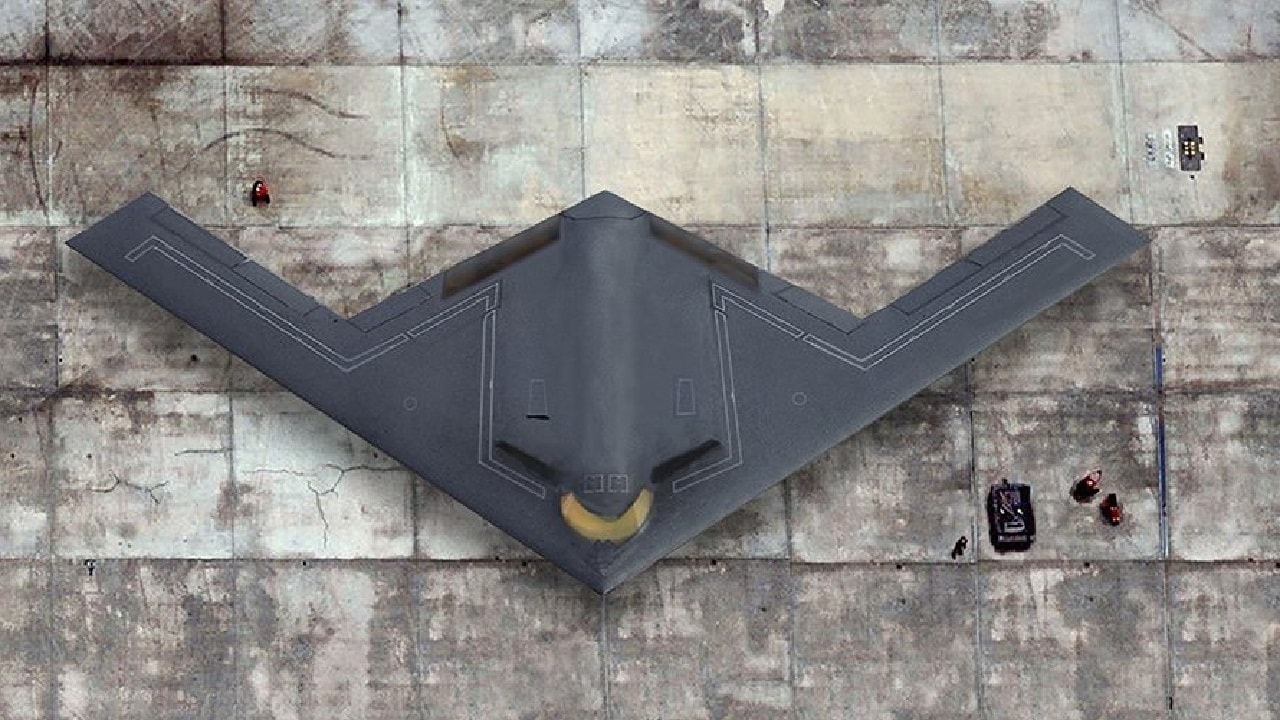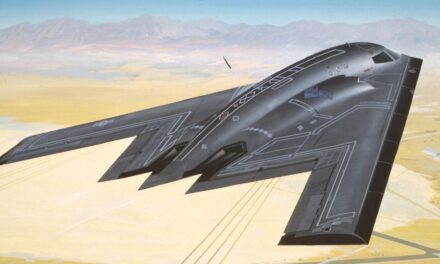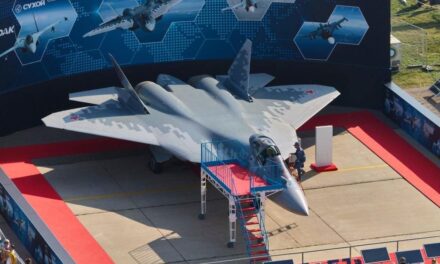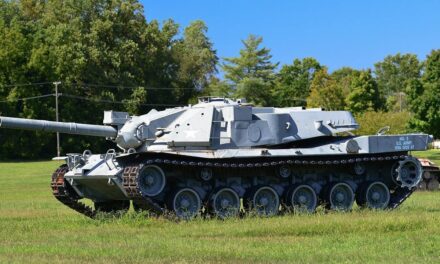We support our Publishers and Content Creators. You can view this story on their website by CLICKING HERE.
Key Points: The U.S. Air Force plans to procure 100 B-21 Raider stealth bombers to modernize its aging bomber fleet, with some experts calling for up to 225 or even 300 units to address rising threats from China and Russia.
-The B-21, expected to cost $700 million per unit, strengthens the nuclear triad and deters adversaries with unmatched stealth.
-Advocates like Senator Mike Rounds emphasize its strategic importance for dual conflicts, but high costs and competing priorities like the NGAD fighter program pose challenges.
-Congressional support and future leadership decisions will determine if the fleet expands beyond the planned 100 aircraft.
100, 225, or 300? The Debate Over America’s B-21 Stealth Bomber Fleet
The U.S. Air Force needs more stealth bombers. Only 19 of the radar-evading B-2 Spirit war birds and the B-52 has served for over 70 years.
Enter the B-21 Raider bomber that will be one of the stealthiest airplanes in U.S. history. The Air Force seeks to have 100 B-21 Raiders and that appears to be a prudent number. This fleet of B-21s would serve the United States well as it switches from the Global War on Terror to potential conflicts with great powers such as China and Russia. But the United States may need more than 100.
There Is a New Threat Environment
There are so many military and nuclear targets in U.S. battle plans that at least 100 B-21s are drastically needed. There is a new Cold War brewing between Russia and China that could turn “hot” at any time. So, the more stealth bombers the Air Force has the better it will be able to protect the Homeland and take the fight to the enemy.
Would 225 B-21s Be Enough?
Some defense analysts are calling for way more than 100 B-21s. Retired Air Force B-52 pilot Colonel Mark Gunzinger believes that the Americans needs at least 225 Raiders to battle potential foes. This seems like a lot with defense budgets always under time, money, and resource constraints. But 225 B-21s would be great if the Department of Defense could make it happen, according to Gunzinger.
“More resources can buy back future risk and that’s what a more aggressive acquisition rate for the B-21 can do,” Gunzinger told journalists in the spring.
Gunzinger believes the threat environment warrants more stealth bombers. Maintaining the nuclear triad is as important as ever, and the Air Force can deliver on these needs with the 225 B-21s. Gunzinger’s report from the Mitchell Institute for Aerospace Studies pointed to the threat from China.
B-21. Image Credit: Northrop Grumman
“The Air Force’s penetrating bombers exist to provide weapons and sensor density at range that enable theater commanders to achieve a wide spectrum of effects against the most difficult target sets. More Air Force long-range, penetrating strike capacity is now required to defeat Chinese aggression in the Indo-Pacific and meet other force sizing requirements. To a significant extent, the need for more long-range penetrating strike capacity is driven by theater commander requirements to counter China’s operational advantages in a conflict that occurs along its periphery,” the report said.
300 B-21s? Why Not?
The National Interest’s Brandon J. Weichert has called for the Air Force to order 300 B-21s, which is likely a bridge too far considering the cost of the service’s Next Generation Air Dominance (NGAD) fighter that has some estimating it will set the Air Force back as much as $300 million per unit.
This Thing Is Expensive and Could Be the Victim of Budget Cuts
The B-21 is also highly expensive – at an expected $700 million per airplane. It is difficult to see a scenario in which the Air Force could afford 300 of the stealth warbirds along with the NGAD.
“The Air Force has requested $2.7 billion for the program in fiscal 2025, down from $4 billion projected last year,” Defense One reported. This is not good news for the B-21 since Congress is apt to continue budget cuts on the project.One Senator is a Big Fan of the B-21.

B-21 Raider artist rendering. Image Credit: Creative Commons.
U.S. Senator Mike Rounds (R-ND) is the biggest champion of the B-21 on Capitol Hill. Rounds told an audience at the Hudson Institute, that “we have to assume that if we have a problem with one of those two near-peer competitors, we will also have a problem with the other at basically the same time. The B-21 fits into this because you have to have a nuclear-capable system that can enter into and hold them at risk inside their homeland. That gets their attention.”
It’s About Improving the U.S. Nuclear Triad
This need for nuclear deterrence is a huge advantage for the B-21. China and Russia do not have the air defenses to take on such a stealthy bomber. They will have to invest more money in modern surface-to-air missile systems and stealthy fighter interceptors to track and destroy B-21s. So perhaps the Raider is worth producing more than 100 units.
The future of the B-21 program will come down to new White House leadership. Should he win, Donald Trump is likely to look for ways to save money. Meanwhile, Kamala Harris has not articulated how much she would spend on defense. Still, Republicans like Senator Mike Rounds may not be enough Congressional lawmakers to convince her that the B-21 is needed so desperately to go beyond 100 units. So, 100 may be the magic number. We’ll update you on how the B-21 program progresses and what that final number will be.

B-21 Raider. Image Credit: U.S. Air Force.
About the Author
Brent M. Eastwood, PhD, is the author of Don’t Turn Your Back On the World: a Conservative Foreign Policy and Humans, Machines, and Data: Future Trends in Warfare, plus two other books. Brent was the founder and CEO of a tech firm that predicted world events using artificial intelligence. He served as a legislative fellow for U.S. Senator Tim Scott and advised the senator on defense and foreign policy issues. He has taught at American University, George Washington University, and George Mason University. Brent is a former U.S. Army Infantry officer. He can be followed on X @BMEastwood.

 Conservative
Conservative  Search
Search Trending
Trending Current News
Current News 





